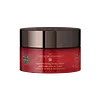What's inside
What's inside
 Key Ingredients
Key Ingredients

 Benefits
Benefits

 Concerns
Concerns

 Ingredients Side-by-side
Ingredients Side-by-side

Water
Skin ConditioningCetearyl Alcohol
EmollientKaolin
AbrasiveHydrated Silica
AbrasiveGlycerin
HumectantStearic Acid
CleansingCaprylic/Capric Triglyceride
MaskingButyrospermum Parkii Butter
Skin ConditioningParfum
MaskingCocos Nucifera Oil
MaskingBambusa Arundinacea Stem Extract
Skin ConditioningZiziphus Jujuba Fruit Extract
Skin ConditioningNelumbo Nucifera Flower Extract
Skin ConditioningBisabolol
MaskingEthylhexylglycerin
Skin ConditioningTocopherol
AntioxidantDisodium EDTA
Xanthan Gum
EmulsifyingSodium Cetearyl Sulfate
CleansingSodium Stearoyl Glutamate
CleansingSodium Stearoyl Lactylate
EmulsifyingPolyacrylamide
Water, Cetearyl Alcohol, Kaolin, Hydrated Silica, Glycerin, Stearic Acid, Caprylic/Capric Triglyceride, Butyrospermum Parkii Butter, Parfum, Cocos Nucifera Oil, Bambusa Arundinacea Stem Extract, Ziziphus Jujuba Fruit Extract, Nelumbo Nucifera Flower Extract, Bisabolol, Ethylhexylglycerin, Tocopherol, Disodium EDTA, Xanthan Gum, Sodium Cetearyl Sulfate, Sodium Stearoyl Glutamate, Sodium Stearoyl Lactylate, Polyacrylamide
Sodium Chloride
MaskingMaris Sal
Skin ConditioningEthylhexyl Stearate
EmollientIsopropyl Myristate
EmollientCarthamus Tinctorius Seed Oil
MaskingParfum
MaskingPrunus Amygdalus Dulcis Oil
Skin ConditioningPersea Gratissima Oil
Skin ConditioningMacadamia Integrifolia Seed Oil
Skin ConditioningArgania Spinosa Kernel Oil
EmollientSimmondsia Chinensis Seed Oil
EmollientHelianthus Annuus Seed Oil
EmollientMoringa Oleifera Seed Oil
EmollientCocos Nucifera Oil
MaskingPrunus Amygdalus Dulcis Shell Powder
AbrasiveRosa Centifolia Flower Extract
AstringentTocopherol
AntioxidantMenthol
MaskingBenzyl Benzoate
AntimicrobialCitronellol
PerfumingCoumarin
PerfumingHexyl Cinnamal
PerfumingLinalool
PerfumingLimonene
PerfumingSodium Chloride, Maris Sal, Ethylhexyl Stearate, Isopropyl Myristate, Carthamus Tinctorius Seed Oil, Parfum, Prunus Amygdalus Dulcis Oil, Persea Gratissima Oil, Macadamia Integrifolia Seed Oil, Argania Spinosa Kernel Oil, Simmondsia Chinensis Seed Oil, Helianthus Annuus Seed Oil, Moringa Oleifera Seed Oil, Cocos Nucifera Oil, Prunus Amygdalus Dulcis Shell Powder, Rosa Centifolia Flower Extract, Tocopherol, Menthol, Benzyl Benzoate, Citronellol, Coumarin, Hexyl Cinnamal, Linalool, Limonene
 Reviews
Reviews

Ingredients Explained
These ingredients are found in both products.
Ingredients higher up in an ingredient list are typically present in a larger amount.
Cocos Nucifera Oil is obtained from the kernels of the coconut fruit. In other words, this is coconut oil.
Coconut Oil is rich in fatty acids with lauric acid making up the majority of these. It also contains linoleic acid. Due to this high fatty acid content, coconut oil helps trap moisture and soften skin.
Despite being antibacterial, coconut oil may not be great for acne-prone skin. It is comedogenic and may clog pores. This ingredient may not be safe for malassezia or fungal acne.
Note: Coconut Oil should not replace your sunscreen for UV protection. Studies show it only blocks about 20% of UV.
This oil is non-volatile and has a light scent.
The term 'fragrance' is not regulated in many countries. In many cases, it is up to the brand to define this term. For instance, many brands choose to label themselves as "fragrance-free" because they are not using synthetic fragrances. However, their products may still contain ingredients such as essential oils that are considered a fragrance.
Learn more about Cocos Nucifera OilParfum is a catch-all term for an ingredient or more that is used to give a scent to products.
Also called "fragrance", this ingredient can be a blend of hundreds of chemicals or plant oils. This means every product with "fragrance" or "parfum" in the ingredients list is a different mixture.
For instance, Habanolide is a proprietary trade name for a specific aroma chemical. When used as a fragrance ingredient in cosmetics, most aroma chemicals fall under the broad labeling category of “FRAGRANCE” or “PARFUM” according to EU and US regulations.
The term 'parfum' or 'fragrance' is not regulated in many countries. In many cases, it is up to the brand to define this term.
For instance, many brands choose to label themselves as "fragrance-free" because they are not using synthetic fragrances. However, their products may still contain ingredients such as essential oils that are considered a fragrance by INCI standards.
One example is Calendula flower extract. Calendula is an essential oil that still imparts a scent or 'fragrance'.
Depending on the blend, the ingredients in the mixture can cause allergies and sensitivities on the skin. Some ingredients that are known EU allergens include linalool and citronellol.
Parfum can also be used to mask or cover an unpleasant scent.
The bottom line is: not all fragrances/parfum/ingredients are created equally. If you are worried about fragrances, we recommend taking a closer look at an ingredient. And of course, we always recommend speaking with a professional.
Learn more about ParfumTocopherol (also known as Vitamin E) is a common antioxidant used to help protect the skin from free-radicals and strengthen the skin barrier. It's also fat soluble - this means our skin is great at absorbing it.
Vitamin E also helps keep your natural skin lipids healthy. Your lipid skin barrier naturally consists of lipids, ceramides, and fatty acids. Vitamin E offers extra protection for your skin’s lipid barrier, keeping your skin healthy and nourished.
Another benefit is a bit of UV protection. Vitamin E helps reduce the damage caused by UVB rays. (It should not replace your sunscreen). Combining it with Vitamin C can decrease sunburned cells and hyperpigmentation after UV exposure.
You might have noticed Vitamin E + C often paired together. This is because it is great at stabilizing Vitamin C. Using the two together helps increase the effectiveness of both ingredients.
There are often claims that Vitamin E can reduce/prevent scarring, but these claims haven't been confirmed by scientific research.
Learn more about Tocopherol